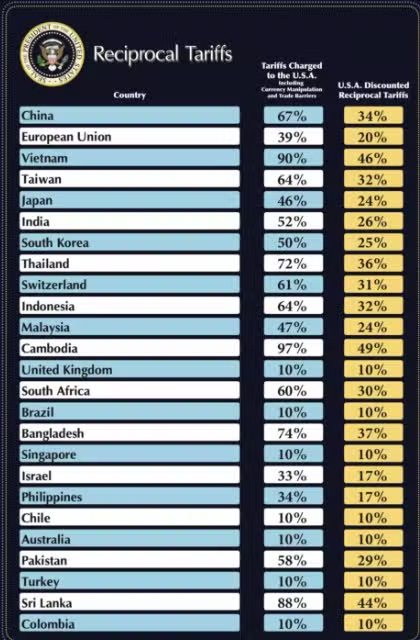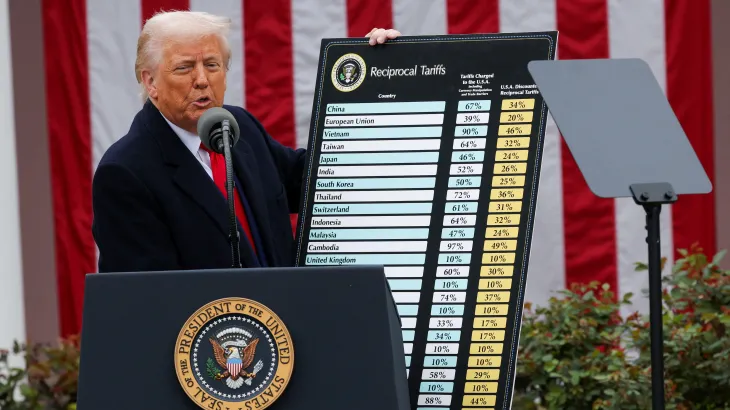Pakistan’s exports to the United States, valued at nearly $6 billion annually, face significant challenges following President Donald Trump’s announcement of reciprocal tariff adjustments affecting more than 180 countries.
The new 29 percent tariff on Pakistani goods marks a dramatic increase from the previous concessionary duties of 4-5 percent that Pakistan enjoyed under the Generalized System of Preferences (GSP). This substantial hike will make Pakistani exports considerably more expensive for American consumers.
However, trade analysts note that Pakistan may retain some competitive advantage compared to several Asian rivals. The new tariff structure places Pakistan in a better position than Vietnam (47 percent), Cambodia (49 percent), and Myanmar (44 percent), though at a disadvantage compared to India (3 percent), Turkey (19 percent), and several Middle Eastern and Central American nations (6 percent).

“The final impact will depend on how each country negotiates its terms, though a decline in sales to the US is expected regardless,” said a senior trade official who requested anonymity.
Pakistan’s textile and clothing sectors, which dominate its exports to the US, will be most affected. In 2023, Pakistan exported $5.01 billion worth of goods to the US, with textiles accounting for the bulk. Key categories included miscellaneous textiles ($3.87 billion), knit or crochet clothing ($785.8 million), and cotton-related products ($1.03 billion).
Trade experts have questioned the methodology behind Trump’s tariff calculations. Rather than being based on actual trade policies, the rates appear to derive from dividing the US trade deficit with a country by its total exports to the US. This approach has resulted in questionable figures and fails to account for the US’s surplus in services trade.
“We will charge them approximately half of what they are and have been charging us,” Trump said in his announcement, claiming that Pakistan charges a 58 percent tariff rate on US goods.
As US import costs rise, American consumers may seek alternative sources or switch to domestic products. For Pakistan’s textile industry, already struggling with economic instability and high energy costs, this represents yet another challenge in maintaining its position in the American market.
Pakistan may seek to diversify its export markets, potentially increasing focus on China and regional partners to offset the impact of these tariffs. More details are expected in the weeks leading up to Pakistan’s federal budget for 2025-26.










